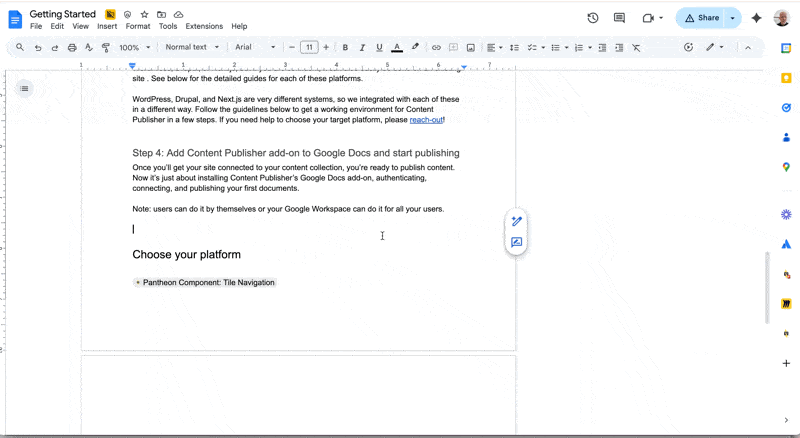Smart Components in Content Publisher
Content Publisher’s Smart Component is a system that allows content creators to add interactive content and data into their editorial content. Smart Components can be placed anywhere in a Content Publisher document body as Smart Chips. They can be fully customized by website developers to hold almost any type of interactive content.
Note: Configuring Smart Components requires developer support to set up. Please consult your administrator to have Smart Components set up for your website. |
Smart Components can be used to embed:
- Rich media players (e.g., YouTube, Instagram, Loom).
- Webforms from your website to capture customer data.
- E-commerce product embeds for direct purchases.
- Internal navigation links using content tiles to connect to related areas of your website.
- Interactive maps with your website’s metadata.
- Live data feeds like stock tickers and other transactional info from third-party platforms.
Smart Components can be previewed using Content Publisher Preview Editors and also using the Google Smart Chips contextual popup.
By design, smart components are made to be customized to your own sites even if some can somehow be generic, they will still rely on being rendered on the website consuming your content. Because of that, they need to be configured and developed on your website.
Smart Components are not yet supported in WordPress. An advanced WordPress developer may be able to customize its WordPress site to expose Smart Components to Content Publisher but this will require custom WordPress development to integrate the Smart Components API.
We offer a generic Smart Component integration in Drupal which will let a Drupal developer configure and expose literally any element developed in Drupal to Content Publisher. Example: showing a content tile from content directly stored in Drupal, rendering a user object, or embedding an interactive form interface. The Drupal administrator will have to simply define the parameters required for the component they want to setup, and ensure templates and underlying business logic are handled correctly in Drupal.
Smart Components integrate natively with React and can expose any configured React Component in a Next.js application. Other React based systems could work very similarly.
See configuring Smart Components for more details on how to add Smart Components to your website.
Google docs users can simply place smart components in their doc (assuming smart components are configured) by typing @pantheon which will open the smart component creation interface.
See screencast:
